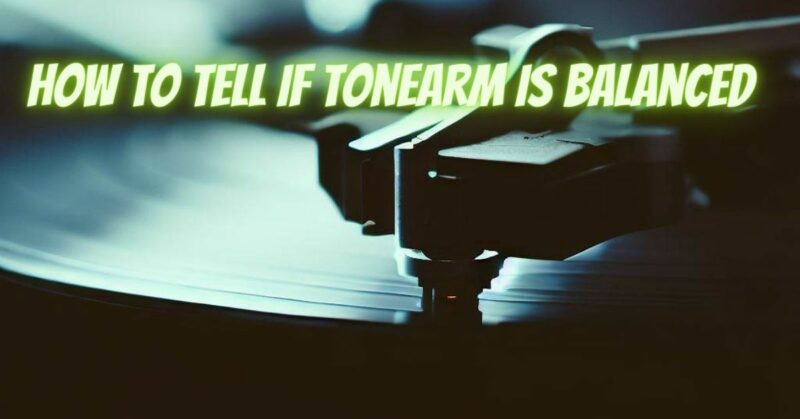A properly balanced tonearm is essential for achieving optimal sound quality and preventing unnecessary wear on both your vinyl records and the stylus. But how do you ensure that your tonearm is correctly balanced? In this article, we’ll guide you through the steps to determine if a tonearm is properly balanced, including the tools and techniques needed to achieve accurate results.
Why Balance Matters
A balanced tonearm ensures that the stylus maintains consistent contact with the record’s grooves, allowing for accurate tracking and minimizing wear on both the stylus and the vinyl. Proper balance also prevents unwanted pressure on the record, which can lead to distortion and compromised sound quality.
Steps to Determine Proper Balance
- Gather the Necessary Tools:
You’ll need a stylus force gauge, a level or protractor, and a tracking force adjustment mechanism (if available on your turntable).
- Set Up the Turntable:
Place your turntable on a stable surface, preferably isolated from external vibrations. Ensure that the platter is level using a bubble level.
- Zero the Tonearm:
Make sure the tonearm is in its rest position and parallel to the platter surface.
- Attach the Stylus Force Gauge:
Carefully attach the stylus force gauge to the tonearm, following the manufacturer’s instructions.
- Adjust the Counterweight:
If your tonearm has a counterweight, adjust it until the stylus force gauge hovers at zero. The tonearm should be in perfect balance, neither rising nor falling.
- Set the Recommended Tracking Force:
Consult your cartridge’s specifications for the recommended tracking force. Adjust the counterweight until the stylus force gauge indicates the recommended tracking force. This ensures that the stylus applies the correct amount of pressure to the record grooves.
- Use a Protractor for Alignment:
If your tonearm has adjustable alignment settings, use a protractor to ensure the cartridge is aligned parallel to the record grooves. This ensures that the stylus is properly positioned across the width of the record.
- Recheck Balance:
After adjusting the tracking force and alignment, recheck the balance of the tonearm using the stylus force gauge. It should still hover at zero when the tonearm is in its rest position.
- Repeat for Each Record:
Remember that different records may have slightly different thicknesses, which can affect the tracking force. It’s a good practice to check the balance and tracking force whenever you change records.
Achieving proper balance for your tonearm is an essential step in optimizing your vinyl playback experience. By following these steps and using the necessary tools, you can ensure that the stylus maintains consistent contact with the record’s grooves, resulting in accurate tracking and superior sound quality. Regularly checking and adjusting the balance of your tonearm will not only enhance the life of your stylus and records but also allow you to fully appreciate the rich and nuanced audio that vinyl playback offers.


